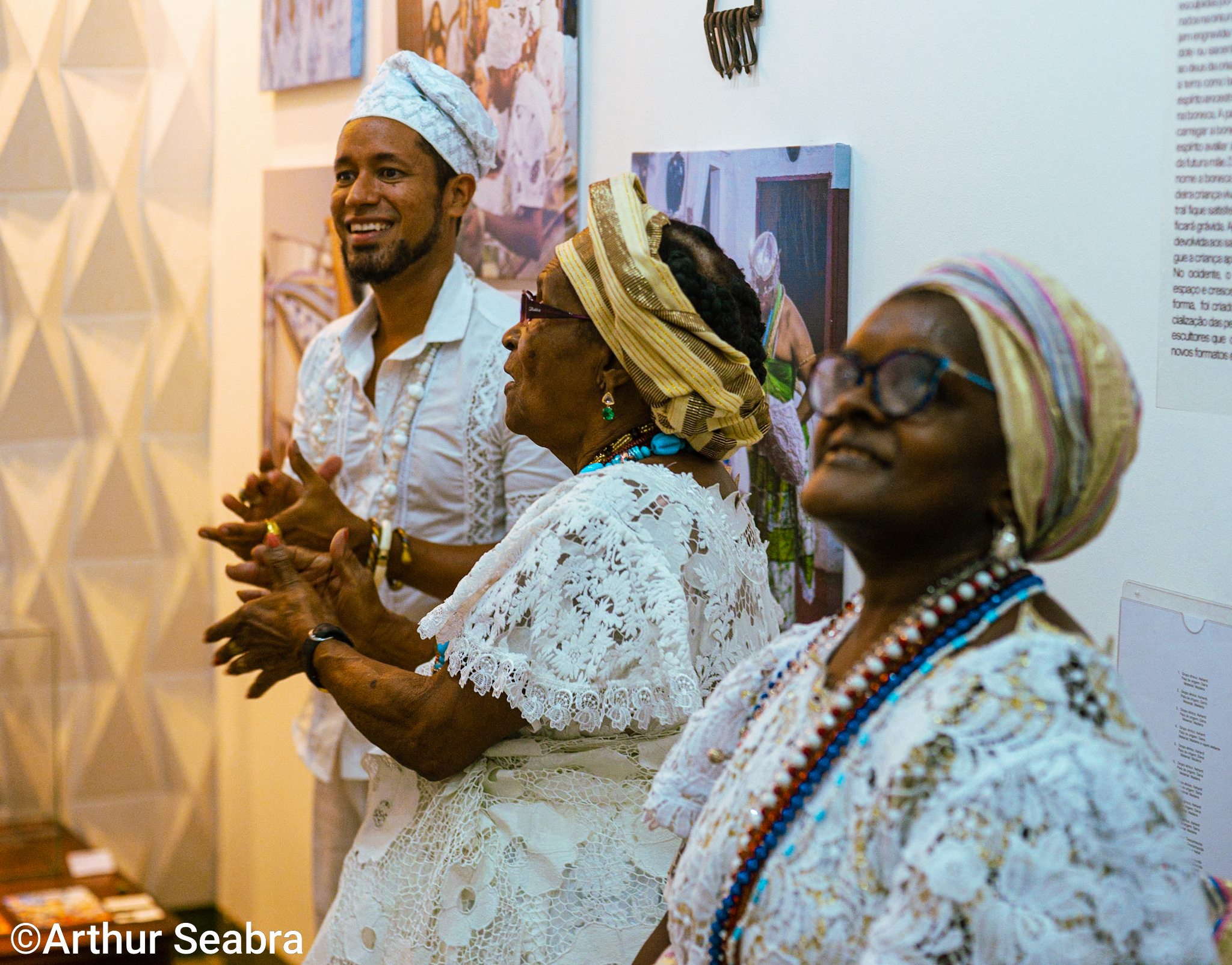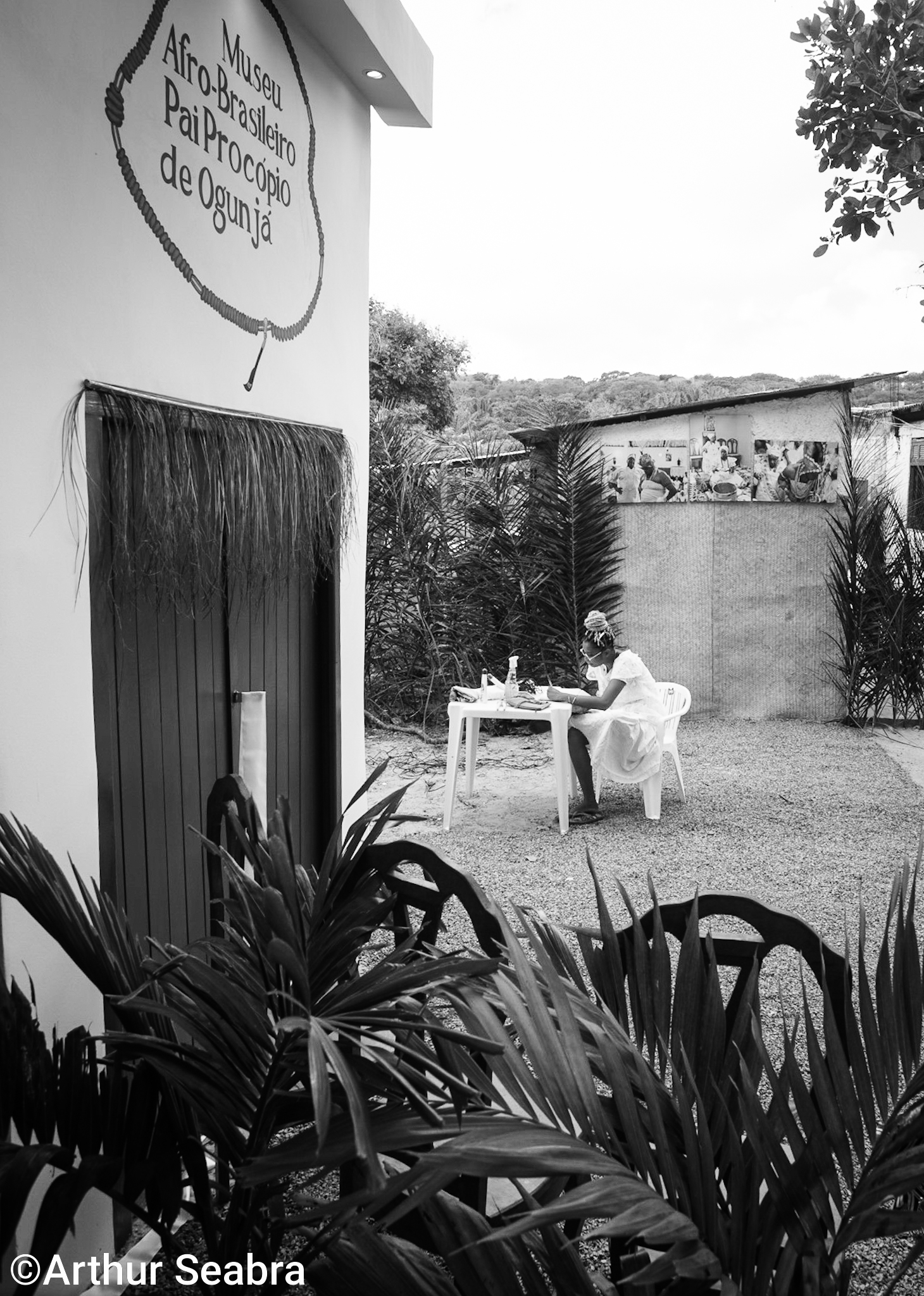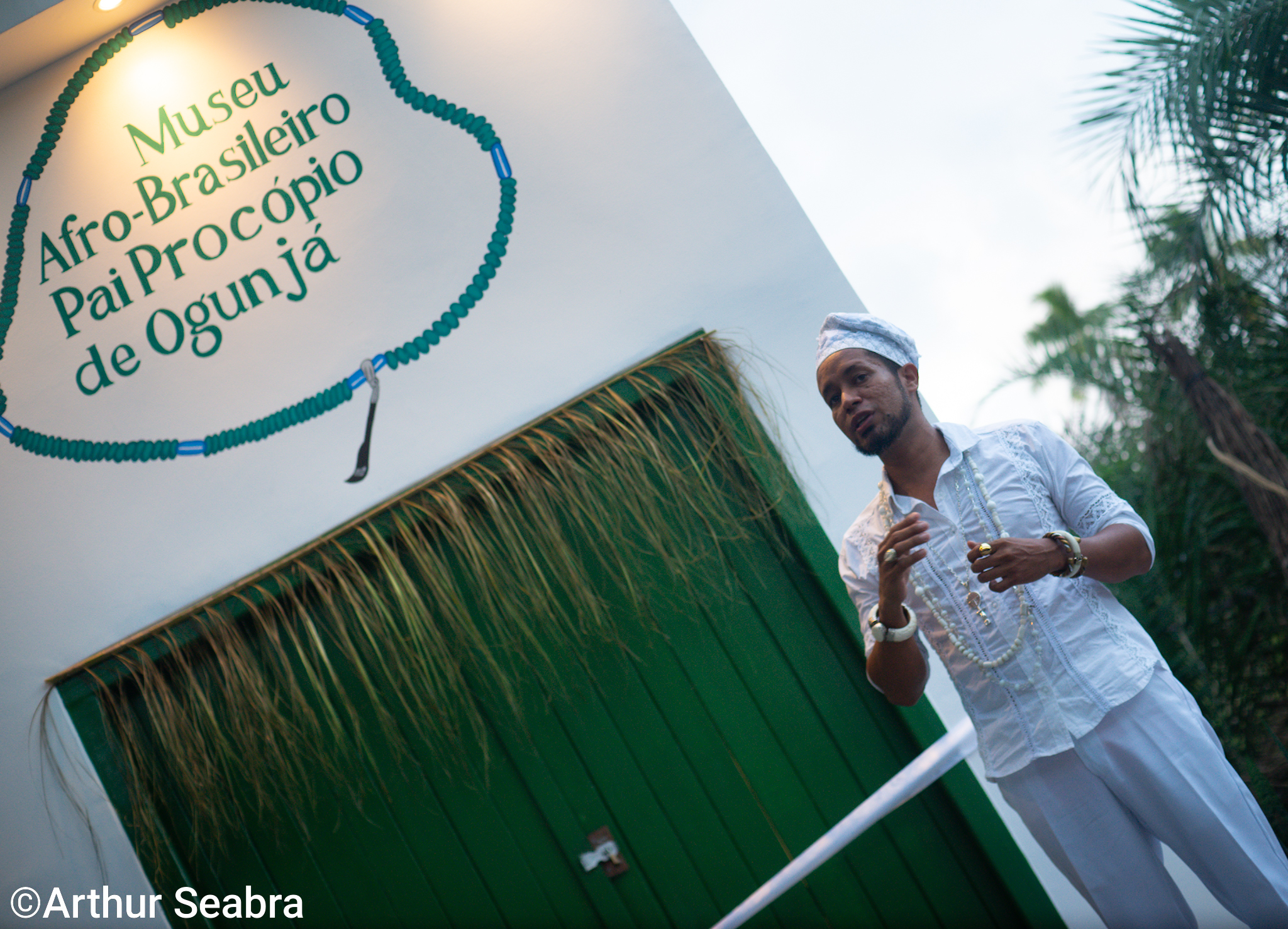Get to know Mappo, a project that preserves traditions and is a symbol of resistance in Bahia
Founded in November 2020, the Pai Procópio de Ogunjá Afro-Brazilian Museum enabled the regulars of Casa do Mensageiro, in Bahia, to connect even more with the territory and also with each other


Credit: Arthur Seabra
By: Eduarda Nunes – Lupa do Bem / Favela em Pauta
A very important character in the history of candomblé in Bahia – who started the tradition of offering feijoada to Ogum and is a symbol of resistance to the violence practiced against the Bahian terreiros in the 1920s –, Father Procópio de Ogum received his memorial in Camaçari, in the metropolitan region of Salvador (BA).
The babalorixá Rychelmy de Esútob, from the Ilê Asè Ojisè Olodumare, also known as Casa do Mensageiro, managed to gather a collection never before sought in the history of the state, through his research on the life of Mr. Procópio.
Inspired by being in the direct lineage of the Casa de Axé of Pai Procópio (Ilê Ogunjá), Father Rychelmy managed to reach Mãe Edna, caretaker of his Santo, in the course of his research. He continued to care of her and had access to more of the babalorixá’s life.

Rychelmy was initiated into Candomblé by Father Gilson, who was initiated by Mother Roxinha, initiated by Father Procópio. Much of the initial information from the research came orally.
Today, the Pai Procópio de Ogunjá Afro-Brazilian Museum (Mappo) is located on the banks of the Pojuca River and is part of the territory of the axé house of the babalorixá who sought to know its history in depth.
“We joke that it is the smallest museum in the world, because the physical space of the exhibition is very small, but today we understand that space as a museum of territory, because when a student goes there, he does not only visit the space of the museum. He visits the outside and some of the inside of Casa de Santo as well”, Yakekerê Daisy Santos, who started in the house in 2013, told Lupa do Bem.


This project brought together all the children of the house and their skills. Because of this, in addition to a territory museum, the regulars also understand it as an affective museum, since everything was made from their human and material resources, without any external financial incentive.
Daisy, by the way, is a museologist and confirms how important was the decision of not creating a space of memory alone: “a memorial brings a narrative that ends and, with an Afro-Brazilian museum, we are talking about a universe of possibilities that can be approached. Not just the Candomblé universe”, she highlights.
Contrary to traditional narratives
Another decisive factor in the construction of the Museum was the needs that the children of the house had about this space in relation to the black population. The museological approach to the history of black population generates a lot of discontent among the children of the house – many are from the areas of Social Sciences and Humanities. This feeling was of paramount importance for the Pai Procópio Afro-Brazilian Museum to go against these narratives.
This whole process made it possible not only for the House to strengthen itself internally, but also to bring the members together and highlight the skills of each one, as well as with the surroundings of the terreiro.
Currently, Casa do Mensageiro works with other religious and cultural institutions in Barra de Pojuca to create ethnic tourist itineraries that further value the place, its traditions and environmental preservation.
To mark its first year of activity, Mappo held a Cultural Day on November 20, which features cultural presentations, the launch of the book “Caos, Elos e Recomeços: O amor ao Orixá” written by the regulars of the house, workshops and an ecological trail.


“I’ve worked in several museums and it’s a new perspective on everything I, as a museologist and museum professional, have worked on. And, for me, it’s the most revolutionary of all, because you’re involving people who are not used to visiting museums. There are children who will grow up with a different idea of what a museum is”, says Daisy, with great enthusiasm.


